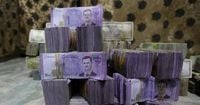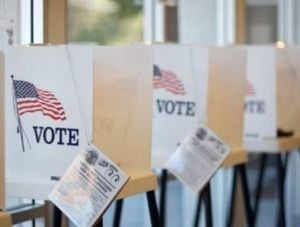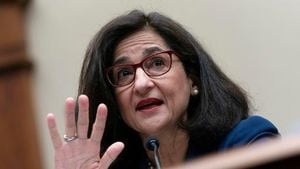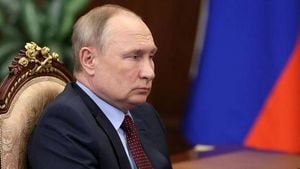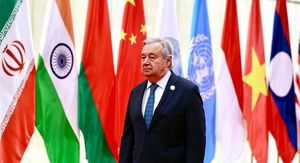Syria is poised to take a dramatic step in its economic recovery efforts this December, as the government prepares to issue new banknotes that will remove two zeros from the battered Syrian pound. According to sources and documents reviewed by Reuters, this move is designed to restore public confidence in a currency that has lost more than 99% of its value since the outbreak of civil war in 2011.
The Syrian pound’s collapse has been nothing short of staggering. Before the war, the exchange rate hovered around 50 pounds to the U.S. dollar. Today, it has plummeted to roughly 10,000 pounds per dollar—a jaw-dropping decline that has rendered daily transactions cumbersome and, at times, surreal. For many families, paying for weekly groceries means lugging around black plastic bags containing at least half a kilogram of 5,000-pound notes, currently the highest denomination in circulation.
In mid-August 2025, Syria’s Central Bank quietly notified private banks of its intention to introduce new currency by "removing zeros," as confirmed by a document seen by Reuters. This plan, still not publicly announced, was discussed in a series of meetings chaired by Central Bank Deputy Governor Mukhlis al-Nazer. Several commercial bankers who attended these meetings told Reuters that the Central Bank later clarified the plan would involve removing two zeros from the currency. The Central Bank, along with the head of its Banking Supervision Department, Amal al-Masri, and the Syrian Finance Ministry, all declined to comment on the matter, citing confidentiality.
The logistical aspects of this overhaul are already in motion. Two commercial bank directors said the Central Bank has instructed lenders to ensure their infrastructure is ready for the rollout by mid-October. According to Central Bank circulars obtained by Reuters, banks have been asked to provide detailed reports on their facilities, including the number of cameras, cash counters, and storage capacity, and to test their automated systems to handle the new currency. The plan includes a 12-month "coexistence period" during which both old and new notes will remain in circulation until December 8, 2026.
Printing the new notes is no small feat. According to two bankers and another Syrian source familiar with the matter, Syria has struck a deal with Russia’s state-owned money printing firm Goznak. The agreement was finalized after a senior Syrian delegation visited Moscow in late July 2025. Goznak, which had previously printed Syria’s currency during the Assad era, did not respond to requests for comment from Reuters.
This currency revaluation is about more than just economics; it carries enormous symbolic weight. For over five decades, the Assad family ruled Syria, and their faces adorned the currency—Bashar al-Assad on the 2,000-pound purple note and his father, Hafez, on the green 1,000-pound note. The new banknotes are being introduced on December 8, the one-year anniversary of Bashar al-Assad’s ouster, marking a definitive break from his regime. As one source told Reuters, "It also carries symbolic weight, signalling a clear break from more than five decades of Assad rule."
Under Assad, the use of foreign currencies was strictly forbidden. However, Syria’s new leaders have pledged to move towards a free-market economy and have lifted many restrictions to ease cash flow. Despite these reforms, the economy has swiftly dollarized. U.S. dollar prices are now common everywhere from storefronts to fuel pumps. Yet, there are growing concerns about a pound liquidity crunch, especially in a country with limited infrastructure for digital payments.
One of the main drivers behind the currency overhaul is the vast amount of Syrian pounds—estimated at 40 trillion—circulating outside the formal financial system. Three Syrian bankers told Reuters that issuing new notes would give the government better oversight over the cash in circulation, potentially reining in the shadow economy and improving monetary stability.
Still, the transition is fraught with challenges. Karam Shaar, a leading Syrian economist and consultant to the United Nations, told Reuters that replacing banknotes featuring Assad’s image is a necessary political shift. However, he warned, "the revaluation could confuse consumers, especially the elderly, and there was a lack of a clear regulatory framework or plan for full national implementation, given the gaps in the state's territorial control." Shaar also pointed out that, alternatively, Syria could have issued higher denominations of the same currency—such as 20,000 or 50,000-pound notes. This approach, he said, "would achieve similar goals in terms of easing cash handling and storage, while avoiding the substantial cost of a full currency overhaul, which could run into hundreds of millions of dollars."
Adding to the uncertainty is the question of legislative approval. It remains unclear whether the currency revaluation requires a green light from Syria’s legislative assembly. The timing is particularly notable: Syria is set to hold its first elections to set up a new legislative assembly in September 2025. The outcome of these elections could influence both the implementation and the long-term success of the currency overhaul.
As Syria prepares for this ambitious monetary reform, the authorities are planning a public information campaign in the coming weeks. The goal is to educate citizens about the changes and ensure a smooth transition when the new notes are formally launched in December. Central Bank officials have instructed commercial lenders to be ready for the rollout, and the banking sector is bracing for a period of adjustment as both old and new notes circulate side by side for a full year.
The move to issue new banknotes and remove two zeros from the Syrian pound is seen by many as a bold attempt to restore confidence in the national currency and signal a break from the Assad era. Yet, questions remain about the readiness of the financial system, the clarity of regulatory guidelines, and the ability of the government to enforce the changes across a country still grappling with the aftermath of war and fragmented territorial control.
For ordinary Syrians, the hope is that this overhaul will make daily life a little easier, reducing the need to carry bulky stacks of cash and improving the stability of their hard-earned money. Whether the new banknotes will deliver on these promises, however, is something only time—and perhaps a bit of luck—will tell.
